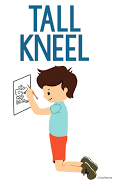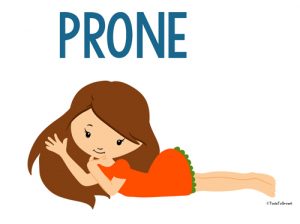What’s Wrong With W-Sitting?
What is W-sitting?
 W-sitting is a way of sitting on the floor. In this position, the child has his bottom on the floor. His knees are bent, resting on the floor, and held fairly close together in front of the body. Both feet are held out to the sides, alongside the bottom. When looking at the person from the front, his legs form the letter “W”. Many children, and adults, will W-sit for periods of time on the floor. W-sitting is a concern when it is the only position a child uses when playing on the floor.
W-sitting is a way of sitting on the floor. In this position, the child has his bottom on the floor. His knees are bent, resting on the floor, and held fairly close together in front of the body. Both feet are held out to the sides, alongside the bottom. When looking at the person from the front, his legs form the letter “W”. Many children, and adults, will W-sit for periods of time on the floor. W-sitting is a concern when it is the only position a child uses when playing on the floor.
Why is W-sitting not encouraged? W-sitting can have a negative impact on the development of gross motor skills. Children who sit in a W-sitting position are often those children that have low muscle tone and decreased stability in their bodies. W-sitting affords the child with low muscle tone a wide stable base of support so that he can use his hands in play without worrying about his balance. When W-sitting, the child’s ability to shift his weight and rotate his trunk is blocked by the stiff position of his legs. When reaching for toys, the child will not need to use his trunk muscles to balance, instead his legs will lock his posture in place, also called “fixing”. He will reach with the upper body only, and therefore does not actively shift his weight from side-to-side.
Smooth weight shifting and rotation of the trunk is necessary for the development of smooth balance and equilibrium reactions. Balance and weight-shifting abilities will impact the development of higher-level coordination during gross motor skills such as running, kicking, throwing, and climbing. Trunk rotation is also important for the development of midline-crossing skills, developing hand dominance, and coordinating the 2 sides of the body together for tasks such as ball catching and cutting with scissors. When a child W-sits, he will also move in and out of W-sitting by coming straight forward to hands and knees, and then return to sitting by moving his bottom back in a straight line between his feet. The stiff position of the legs will prevent a child from rotating his body and moving to the side to begin to creep on the floor. Moving between positions in different planes is important for the development of spatial concepts, and important to a child’s understanding the relationship between his body and the space around him.
W-sitting can also have negative orthopedic implications. W-sitting places the bones of the upper leg (femur) in a position where it is turned internally in the hip socket. Constant use of this position can lead to improper formation of the hip socket, or to the development of a twist in the femur bone so that the child walks with in-toeing, or pigeon toes. W-sitting also places stress on the inside of the knee joints and can over-stretch the ligaments on the inside of the knee. W-sitting places some of the muscles of the legs, such as the hamstrings, hip adductors, and hip internal rotators in a shortened position which can lead to muscle tightness that will interfere with gross motor skills.
What Can I Do If My Child W-sits? There are many positions, other than W-sitting, that are more optimal for gross motor development. You can encourage your child to use a variety of positions when he is playing on the floor.
Pretzel-sitting (sitting with the legs crossed in front) places the hips in a turned out position and is much more beneficial for proper hip development.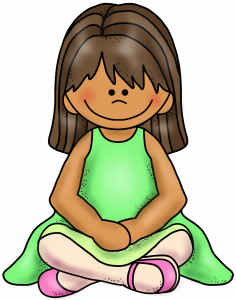
Long-sitting is a position where the child’s legs are stretched out in front of his body. This position puts a gentle stretch on the hamstrings and allows the child to move to each side to reach for a toy, or to get up to hands and knees. If your child’s back is rounded in this position, they can lean against a wall, or piece of furniture when long-sitting.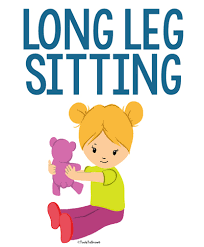
Side-sitting is an excellent position for developing abdominal control and balance. In this position, the child has his weight shifted to one side and must rotate his trunk back to the midline to keep his balance.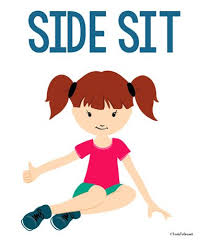
Tall kneeling is another excellent position for your child to use when playing on the floor. By placing toys on a table at waist height your child will be encouraged to maintain a tall kneeling position in play. Tall kneeling is a way of developing strength and control of the muscles of the trunk and hip.
Stomach-lying while propped up on elbows is another good position for playing on the floor. In this position the back and shoulder areas are being strengthened, and the legs are extended and stretched.
Once a child can balance and use their 2 hands for reaching activities in alternate sitting positions, it is important to teach them to move in and out of those positions. One way to do this, is to help guide their bottom into a position to one side of their feet when they are on their hands and knees, rather than letting them sit straight back into a W position.
